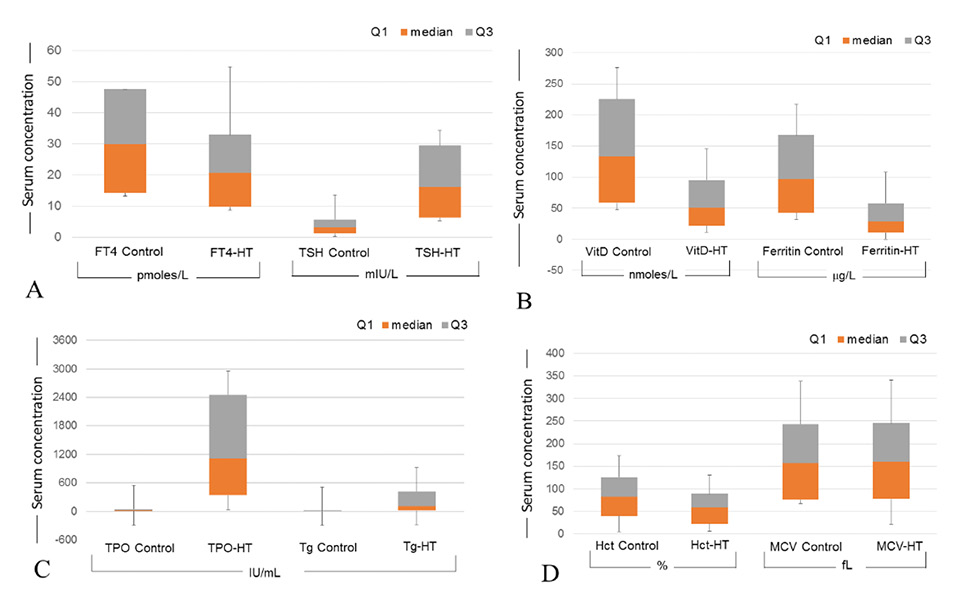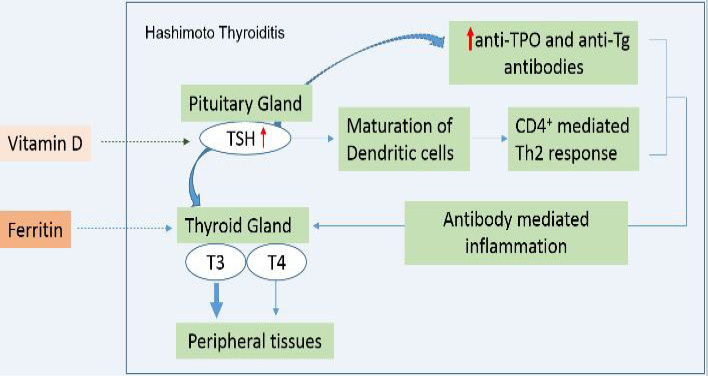The Relationship between Serum Vitamin D Levels and Thyroid Functions in Patients with Hashimoto’s Thyroiditis from Saudi Arabia
The Relationship between Serum Vitamin D Levels and Thyroid Functions in Patients with Hashimoto’s Thyroiditis from Saudi Arabia
Abdullah Alsrhani1*, Aisha Farhana1, Shahid Hussain2 and Muhammad Ikram Ullah1
Comparison of different biochemical parameters between the healthy control group (Control) and Hashimoto thyroiditis (HT) group. (A) Serum concentration of free T4 (FT4) and serum thyroid-stimulating hormone (TSH); (B) Serum concentration of 25(OH)D and ferritin; (C) serum anti-TPO (thyroperoxidase) and anti-Tg (thyroglobulin); (D) hematocrit (Hct) and Mean Corpuscular Volume (MCV) were tested in HT cases and in healthy controls. The x-axis represents the concentration of each biochemical parameter. The units for each biochemical parameter are displayed in the y-axis.
Line fit plot for regression analysis. Regression analysis showed negative correlation (r = -0.221, p = 0.042) between (A) serum 25(OH)-D and anti-thyroglobulin (anti-Tg) and positive correlation (r = 0.240, p = 0.03159) between (B) serum FT4 concentration and serum ferritin levels.
Possible mechanisms of action of vit. D and ferritin in HT disease pathogenesis. Role of vit. D and ferritin is illustrated in the section and activation of hormones and thyroid antibodies.












